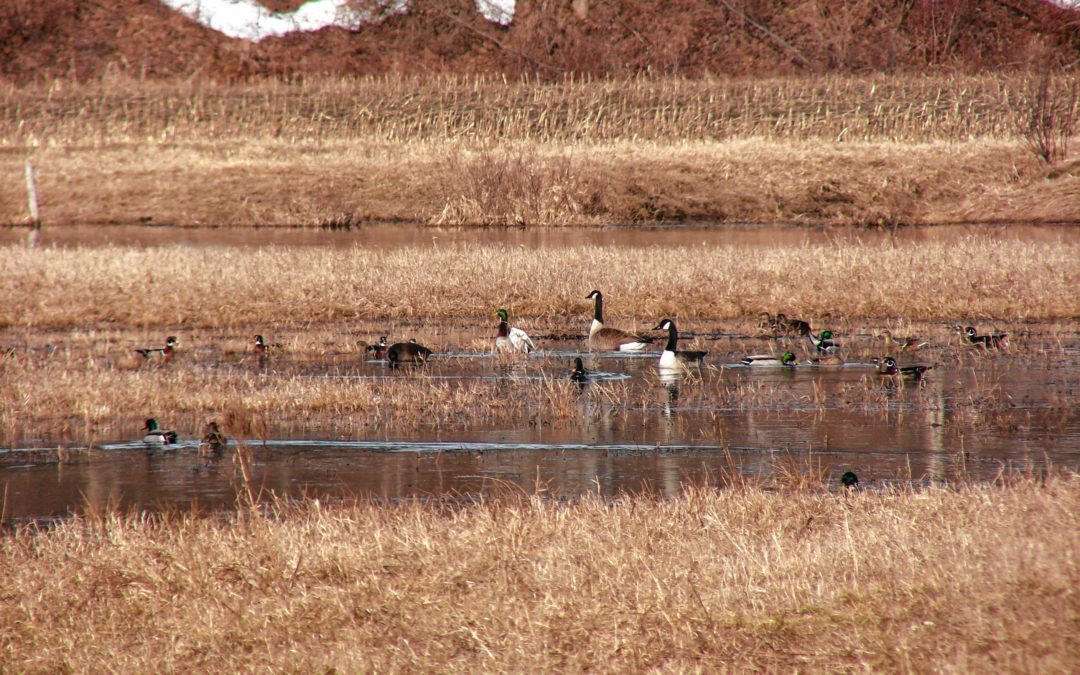One of the sure signs that spring has finally reached New Hampshire is the return of migratory birds. Bird migration actually starts in late February up here, with the first northbound waterfowl and blackbirds. The peak, however, occurs from mid-April to the end of May, when birds that spent the winter south of the United States finally start to reach their northern breeding grounds.
Bird diversity peaks during this time, with warblers in the treetops, ducks on the ponds, and sandpipers along the beaches, and it should thus come as no surprise that birders try to pack as much outdoor time into those six weeks as possible.
So if you’ve always wondered what this “birding” thing is all about, there’s no better season than spring to try it out. Birds are in their colorful breeding plumage, they’re often singing, and right now, there aren’t many leaves to get in the way. To help you along, here are 10 simple things that all birders should know and embrace. They’ll make you a better birder, and hopefully serve you well for the many years of birding to follow!
Ten Tips for the Beginner Spring Birder:
1. Get up early.
Birds can actually get worms at any time of day, but the early birder is much more likely to find what they’re looking for. Birds are far more active first thing in the morning. They’ve just fasted all night and are actively feeding. Singing also peaks for a few hours after sunrise. While this doesn’t mean you need to get up at dawn (it is, however, highly recommended!), heading out after noon is far more likely to be disappointing.
2. Location, location, location.
While birds are literally everywhere in the spring, your chances of finding multiple species and high numbers depends on where you look. Habitat edges provide both easy viewing and often birds typical of multiple habitats. Wetlands, with their abundant insects, can also be hot spots. Small patches of vegetation in more urban surroundings, such as parks and cemeteries, can be magnets to birds looking for a safe place to rest and refuel.
3. Watch the weather.
Just like people, birds respond to local weather conditions in predictable ways. They’re far less active when it’s raining (although they still need to eat) and on hot days, and they can be hard to hear if it’s too windy. During migration, overnight winds from the south often help birds along, and the following morning can yield all manner of newly-arrived feathered gems if you know where to look.
4. Know what’s possible.
Identifying birds is far more than field marks. Knowing the seasonal timing of arrivals, habitat preferences, and distribution is critical when you need to narrow down a list of possible species to choose from. For example, Common Mergansers are almost always on freshwater, while the similar Red-breasteds are usually on the ocean. With respect to timing, a Blackpoll Warbler could occur anywhere in New Hampshire in late May (even where it doesn’t breed), but would be extremely unusual before the first week in May. It takes time to learn birds’ seasonal schedules (eBird can help, see below), but it’s time well spent.
5. Listen.
Learning bird songs and calls can be hard, but sound can be a critical cue to help you find birds. Even if you don’t know what it is, tracking down the source of an unfamiliar noise may reward you with a visual identification. At the same time, listing to it over and over while you search is more likely to lead to learning the song for future reference. A corollary to this tip: speak quietly when birding; it helps you hear and is less likely to disturb the birds.
6. Join a group.
Conservation organizations offer field trips all over the state, and there is no better way to learn than to accompany other birders. People leading these types of outings are often excellent teachers, especially good at helping new birders.
7. Learn to use eBird.
Birding has most definitely entered the digital age, with all manner of resources now available for all skill levels. For up-to-date information on local sightings, plus a way to keep track of your own, I recommend the online database eBird, managed by the Cornell Laboratory of Ornithology. As an added bonus, the data submitted through eBird is increasingly used for scientific research and conservation.
8. Get good binoculars.
This seems pretty obvious, but I have led field trips where participants actually don’t have the means to see birds – which are often at some distance. You can get a reasonable pair for under $200, and they make all the difference in the world once you know how to use them (which isn’t hard).
9. Get outside.
Sure, you can watch birds at your feeders, and that’s a great way to learn many of the common species, but they are just a small sample of the birds that are out there to see. To become familiar with all that the Granite State has to offer, you’ll need to spend time in nature – and who’d argue with that?! Just don’t forget to get up early.
10. Stay outside.
This one is so important I had to use it twice. There is no substitute for experience when it comes to becoming a better birder. And even if you don’t find as many birds as you might like, you will still be enjoying the beauty of New Hampshire in spring!
Helpful links
New Hampshire Audubon leads birding field trips all over the state, including walks for beginning birders. Find event listings and special beginning bird classes at nhaudubon.org.
To see what birds are spotted in your area and to add your own sightings, visit eBird at ebird.org/nh/home.
All About Birds is an excellent website for bird identification, from Cornell Laboratory of Ornithology: allaboutbirds.org/guide/search. u


 View Print Edition
View Print Edition
Thank you for mentioning how small sections of vegetation may attract birds that need to rest. My daughter and I are interested in bird watching and want to look for some unique species of birds that we can photograph, but we’re worried the area we live in may be too cold for birds to visit our yard. Maybe we should look for some bird watching supplies online to help us locate different species more easily.
Thanks this was very helpful 🤗